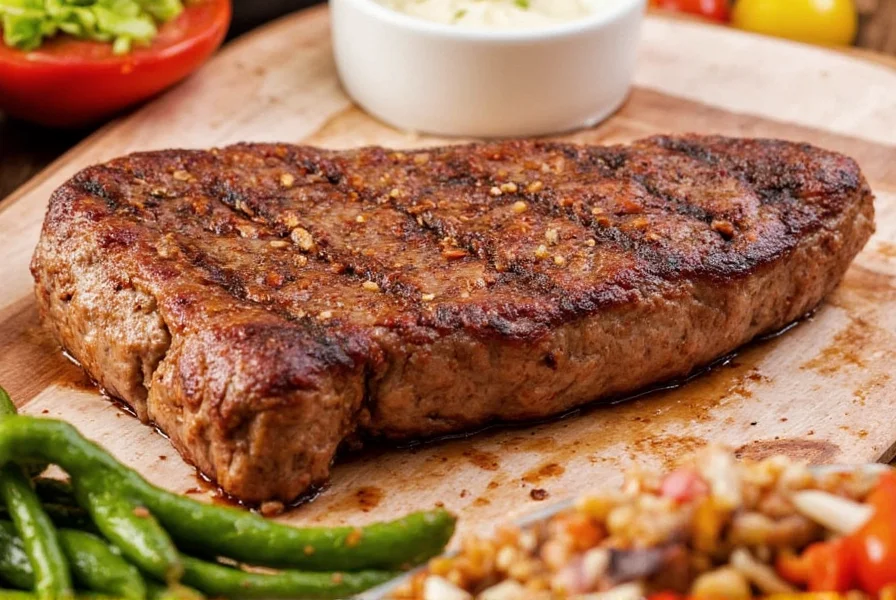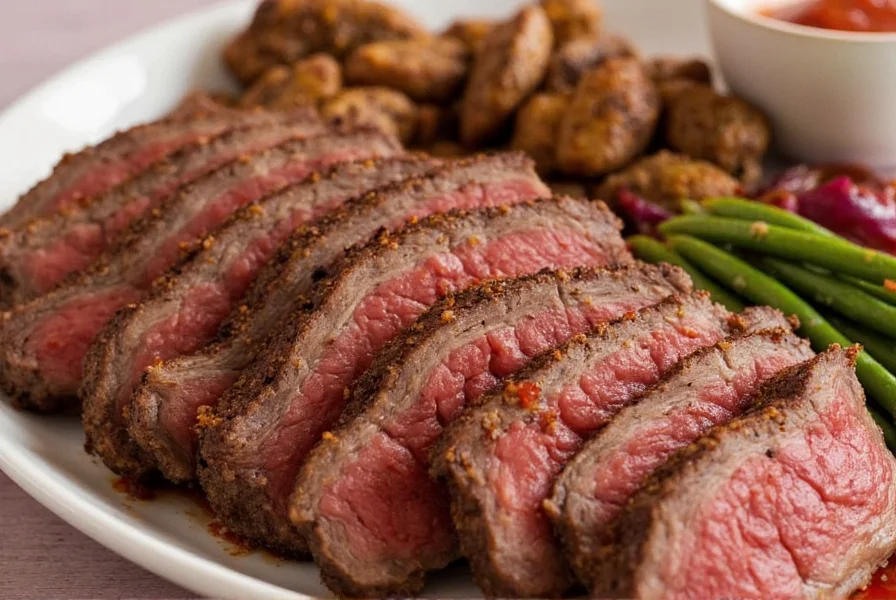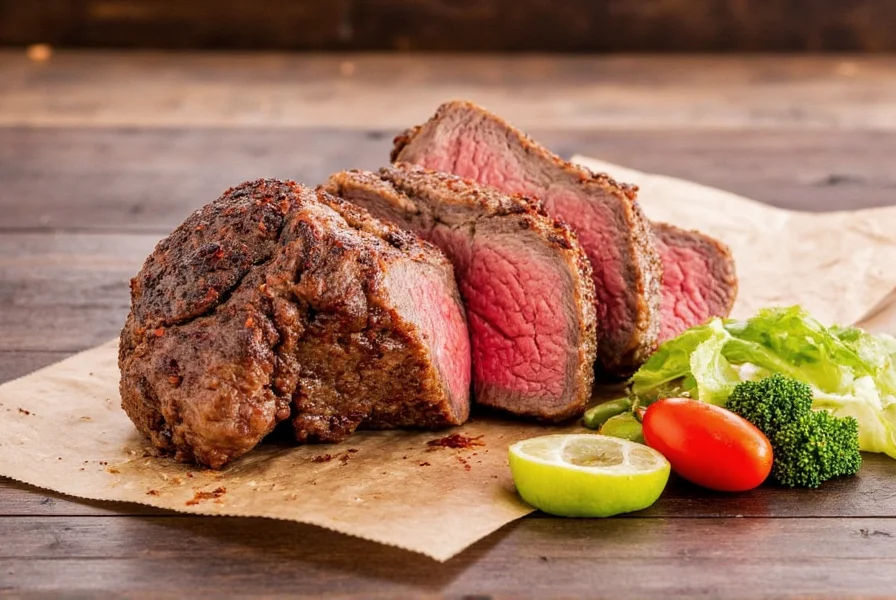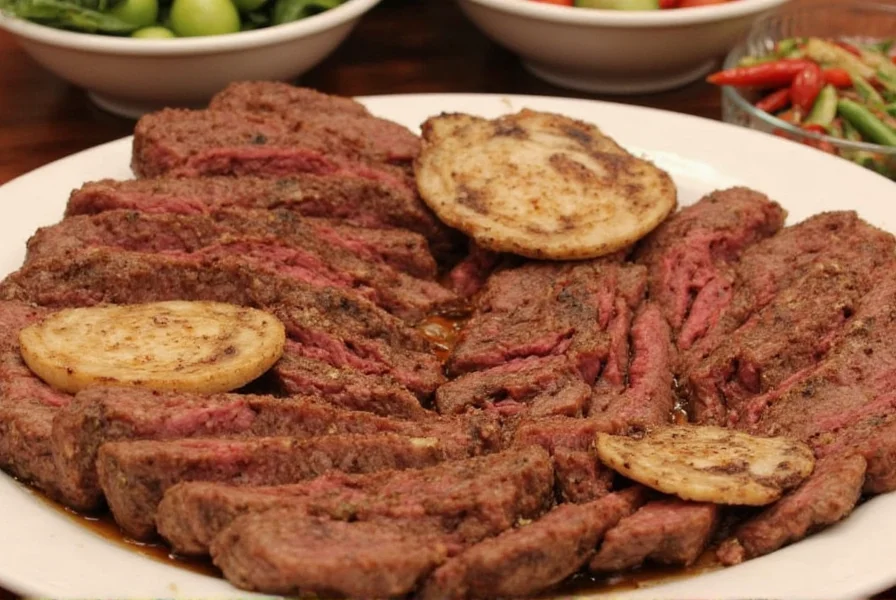Table of Contents
Introduction to Seasoned Steak
Seasoning a steak properly is key to unlocking its full flavor potential. This guide covers everything you need to know about choosing the right spices, applying them correctly, and achieving restaurant-quality results at home. Whether you're a beginner or an experienced cook, mastering these fundamentals will transform your steak from ordinary to extraordinary.
Spice Basics: What You Need to Know
Before diving into specifics, understand that spices aren't just about heat—they add depth, aroma, and complexity. Here are essential spices for steak seasoning:
- Black Pepper: Sharp, earthy flavor that enhances natural meat taste.
- Salt: The foundation; brings out flavor without overpowering.
- Garlic Powder: Savory umami layer for rich depth.
- Onion Powder: Sweet and pungent notes that balance richness.
- Smoked Paprika: Smoky, slightly sweet flavor perfect for grilled meats.
- Thyme or Rosemary: Herbal, aromatic touch that complements beef beautifully.
Practical Tips for Seasoning a Perfect Steak
- Use High-Quality Salt: Kosher or sea salt dissolves evenly and enhances flavor without excessive saltiness.
- Let the Steak Rest: Bring to room temperature for 30 minutes before seasoning to ensure even cooking and better spice absorption.
- Apply Generously: Season both sides liberally; press dry rubs into the meat for adhesion.
- Pair Spices with Cooking Method: For grilling, use smoked paprika and garlic powder. For pan-searing, a simple salt-pepper-thyme blend works best.
- Avoid Overseasoning: Start with minimal amounts and adjust—too much can mask the steak's natural flavor.
Temperature Control for Perfect Steak
Temperature management is critical for achieving the ideal sear and even cooking. Here's how to control heat for different methods:
- Pan-Searing: Preheat skillet to medium-high (400-450°F / 200-230°C) until hot but not smoking. A hot pan creates a quick sear that locks in juices while allowing seasoning to form a flavorful crust.
- Grilling: For direct heat, preheat to high (450-550°F / 230-290°C) for a quick sear. For thicker cuts, use a two-zone fire: high heat for searing, then move to medium heat (350-400°F / 175-200°C) to finish cooking evenly.
- Oven Roasting: Preheat oven to 400°F (200°C). Sear the steak first in a hot skillet, then transfer to the oven for consistent internal cooking. Ideal for ribeye or New York strip.
Always use a meat thermometer for accuracy: 120°F (49°C) for rare, 130°F (54°C) for medium-rare, 140°F (60°C) for medium, and 150°F (66°C) for well-done.
| Spice | Features | Advantages | Use Cases |
|---|---|---|---|
| Black Pepper | Sharp, earthy flavor | Enhances natural meat flavors | Classic steak seasoning for all cuts |
| Kosher Salt | Coarse texture, clean taste | Even distribution, no additives | Base seasoning for all steaks |
| Smoked Paprika | Smoky, slightly sweet flavor | Adds depth and richness | Grilled or smoked steaks |
| Garlic Powder | Savory, umami-rich | Enhances flavor profile | Any steak cut, especially ribeye |
| Thyme | Herbal, aromatic | Complements beef without overpowering | Pan-seared or roasted steaks |

When buying spices, prioritize high-quality products with minimal additives. Fresh spices offer superior flavor—check expiration dates and consider whole spices for longer potency. For best results, grind whole spices just before use to release maximum aroma.
Frequently Asked Questions About Seasoning Steak
How long before cooking should I season my steak?
For optimal results, season at least 45 minutes to 1 hour before cooking. For deeper flavor penetration, salt the steak and refrigerate uncovered for 24-48 hours (dry brining). If short on time, season immediately before cooking rather than 5-10 minutes prior to avoid moisture loss.
Should I use fresh or dried herbs for steak seasoning?
Dried herbs are generally better for steak. Fresh herbs contain water that creates steam during high-heat cooking, preventing a good sear. Dried herbs like thyme, rosemary, and oregano have concentrated flavors that withstand intense heat. If using fresh herbs, add them as a garnish after cooking.
What's the difference between seasoning and marinating steak?
Seasoning applies dry spices directly to the surface for crust formation, while marinating soaks steak in liquid (oil, acid, seasonings) to tenderize and infuse deeper flavor. For high-quality steaks, simple seasoning is preferred as marinating can mask natural beef flavor.
Can I use pre-made steak seasoning or should I make my own?
Both work well. Pre-made blends offer convenience, but homemade allows customization. A basic blend of kosher salt, black pepper, garlic powder, and onion powder is ideal. Add smoked paprika for smokiness or cayenne for heat. Homemade ensures quality ingredients without additives.
How much salt should I use on a steak?
Use about 1 teaspoon of kosher salt per pound of steak. Kosher salt is less dense than table salt, so reduce table salt by half. The salt should visibly coat the surface without piling up. Goal: enhance flavor, not create saltiness.
What temperature is best for searing steak?
For pan-searing, preheat skillet to 400-450°F (200-230°C) until hot but not smoking. This creates a quick sear that locks in juices while forming a flavorful crust. Use a thermometer to verify temperature before adding steak.
Conclusion
Seasoning a steak is both science and art. By understanding spice fundamentals, mastering temperature control, and applying these tips consistently, you'll achieve restaurant-quality results at home. Remember: balance is key—let the steak's natural flavor shine while enhancing it with thoughtful seasoning. Now grab your favorite spices and start cooking!













 浙公网安备
33010002000092号
浙公网安备
33010002000092号 浙B2-20120091-4
浙B2-20120091-4